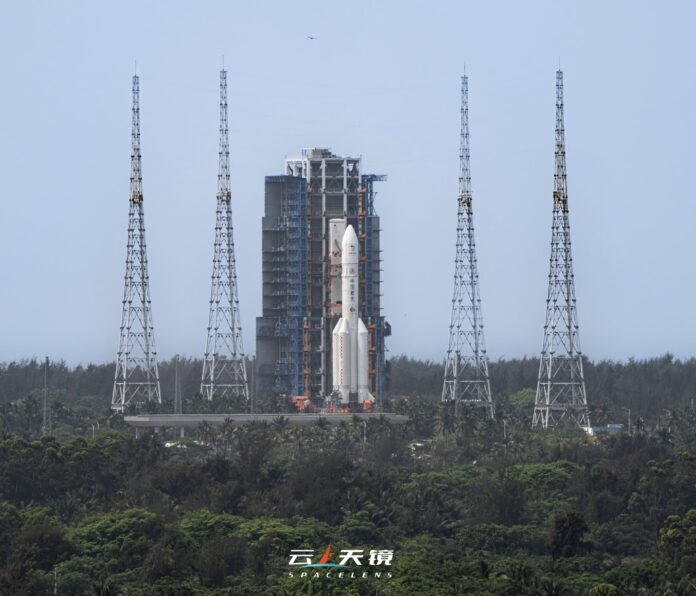
Islamabad, May 4: In a historic occasion for Pakistan, the country on Friday launched its first mission to the moon, in collaboration with China.
The Pakistani satellite, iCube Qamar, was sent on board the Chinese lunar probe Chang’e-6 rocket to orbit and explore the ‘far side’ of the moon by taking pictures, and collecting rock samples.
The Chinese rocket lifted off from the Wenchang Space launch site in China’s Hainan Province. Besides Pakistan, the Chinese rocket was also carrying the payloads of France, Italy, and Sweden.
The Pakistani satellite, weighing about 7kg, has been developed by the Electrical Engineering Department of the Institute of Space Technology (IST) in Islamabad. It was developed in two years, according to media reports.
A collaboration between Pakistan’s space agency SUPARCO (Space & Upper Atmosphere Research Commission) and China’s CNSA (Chinese National Space Administration), the lunar mission has an estimated 53 days’ time to complete its primary task.
Commending the launch, Pakistani Prime Minister Shehbaz Sharif said that the friendship between the two nations, which was “higher than Himalayas, deeper than ocean, and sweeter than honey” has now “crossed the frontiers of space”.
The iCube-Qamar is a miniature satellite built in a standardised cubic design at minimum cost. The module’s instruments include two optical cameras for imaging the moon.
Speaking with Geo News, Dr Khurshid — a member of the Core Committee at the Institute of Space Technology (IST) — said that Pakistan’s satellite mission will reach the lunar orbit in five days and will circle around the moon for three to six months.
The launch of satellite I-Cube-Qamar was telecast live from the Institute of Space Technology’s (IST) website.
The quest to send a lunar orbiter started in 2022 when the China National Space Agency (CNSA), through the Asia Pacific Space Cooperation Organization (APSCO), offered member states an opportunity to send a student-built payload to Earth’s closest celestial neighbour onboard the Chang’e 6 mission.
China’s Chang’e-6 rocket is part of Beijing’s ambitions to fulfill its ‘space dream’ for which it has invested heavily.
Much like China’s other lunar endeavours, the mission’s name Chang’e is derived from the mythological Chinese goddess of the moon.







